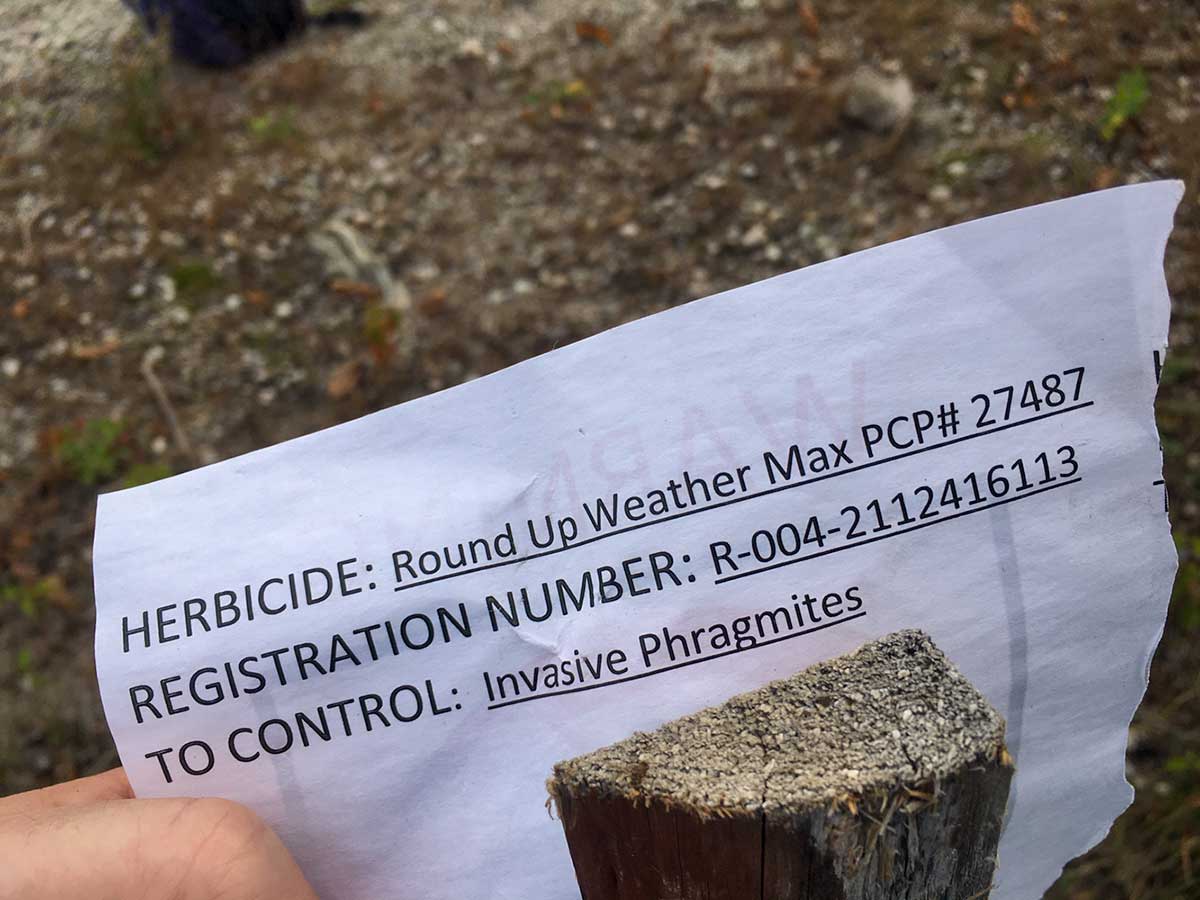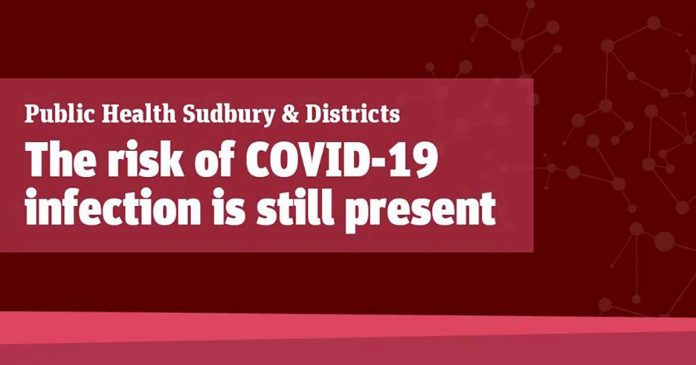Too late in season for phragmites control
LITTLE CURRENT – Little Current’s Zak Nicholls was out for a walk on September 26, picking up garbage along the way, when he made an upsetting discovery. The garbage he had been picking roadside may have been coated in the likely carcinogenic Roundup, which had been sprayed in the area, and with little notice.
“I was out walking along the highway (Highway 6) enjoying the scenery and picking up garbage,” Mr. Nicholls told The Expositor. “I saw a small post with a crumpled paper attached to it in the ditch and went to investigate.”
Mr. Nicholls found that the crumpled piece of paper was a notification from the Ministry of Transportation (MTO) contractor Emcon Services, stating that Roundup had been sprayed in the area. “The signs I saw indicated spraying from September 21-23. My walk was September 26.”
“In the past, pesticide use had to be made publicly known through media such as your publication, and the location of spraying and reported within a week prior to the completion and made available to all who would request it,” Mr. Nicholls added. “It was a thorough report. I have never been presented this report in a timely fashion, although I recognize the regulations have changed. The MTO did present a report once that illustrated the detail that was once required—that was three years ago and chronicled spraying completed by Pioneer Construction and Judith Jones on behalf of the MTO.” Ms. Jones is the Manitoulin Phragmites Project co-ordinator, and this organization will sometimes use Roundup as part of its control plan for the invasive reed.
“I do appreciate the tenacity of phragmites and how the reed is changing entire landscapes in short order,” Mr. Nicholls added, noting that, “I’m not convinced chemicals are the way to address the situation. Regardless, I feel notification must be improved.”
MTO confirmed with The Expositor that Emcon Services sprayed herbicides between September 18-23 in the areas north of the Little Current Swing Bridge and south of Little Current, starting near Sheguiandah. “The use of pesticide was to treat phragmites, an invasive species in the area,” said Carole Paiement, communications co-ordinator for MTO’s Northeast region. “Spraying did not occur in the town of Little Current.”

Ms. Paiement explained that notices were posted at the locations where spraying was scheduled to take place in accordance with notification options outlined in the Pesticides Act. “Paper signs were displayed at least 48 hours before spraying. Signs compromised by the weather were replaced. We are working with the contractor to discuss the possibility of using laminated signs in the future.”
Section 75(1) 1. of the Pesticides Act states: The sign shall be made of rain resistant material and shall be sturdy enough that it can be read at all times and reused. This, Mr. Nicholls shared, was not the case.
Ms. Jones was “flabbergasted” at the news that spraying had occurred without proper notice. The phragmites project co-ordinator said she has been trying to work with MTO in regards to herbicide spraying.
“Last year they (sprayed) on October 3, and this year September 23?” Ms. Jones asked incredulously. “It’s too late at this time of year. The plants are dead by then.” She also noted that this time of year roadsides are filled with water, which means Roundup will seep into the waterways. “It should be done in mid-July when it’s bone dry around here.” MTO’s fall efforts at controlling phragmites will be for naught, for the third consecutive year.
Not giving the public proper notification is irresponsible, she added, and irks the public. While Ms. Jones is not opposed to spraying herbicides in small amounts, she believes it should be done as a last resort and only if it means saving a habitat that is in danger because of phragmites and to use the herbicide, she added, with the public given full notice of the spraying days in advance.





